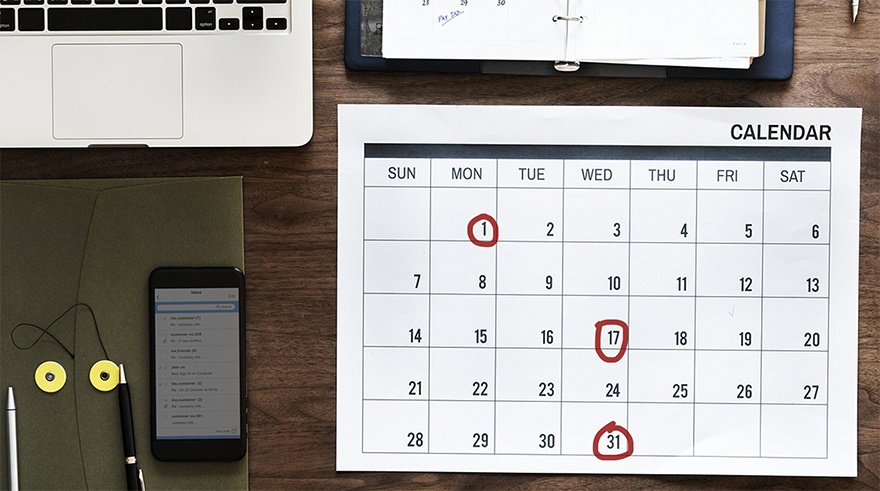Did you ever got lost in our own organization? It is more common than you think. That happens because we do not embrace it naturally. Most of the times we try to force ourselves to organize our workspace, our house, our closet and these become arduous tasks to complete.
The trick is to face these organization projects like we should face every other challenge in life: naturally, calmly, smartly and intuitively. To help you out we made a research on the subject and compiled the top 5 on the most efficient, smart tips we could found all over the world wide web:
1. Unclutter all your spaces – it can be extremely fun
Starting is the hardest part of an organization process, right? Wrong! Organizing your spaces should start with a total purge. And taking everything off every drawer, cabinet, compartment is extremely fun and it can also be truly relaxing. Particularly because you always find stuff that you had no longer memory off! After it is all clear, you will end up with noticing all the dust that accumulated behind your stack of unused office supplies and trash like week-old memos and large piles of files and old conference swag on the floor. Now you can do a quick cleaning and amuse yourself trashing and throwing things into the bin. You will be mostly using the paper recycling bin, nevertheless do not forget to carefully sort the stuff you are throwing away by materials.

2. Keep only what is relevant – hoarding is not the allowed
Every time you organize, if you are really taking this organization business seriously, you need to force yourself to clearly decide what’s actually worth keeping and what’s worth ditching. There is no other option. Having a “decide later” pile is not acceptable at all. Thinking “what happens if I need this later?” is almost automatic when we are leaching our stuff, especially our work related stuff. But we never do need that piece of information later and it will be contributing to thicker, and “not that really organized” piles a lot faster. Be brutal when purging and sorting.
It’s okay to pick favorites. Always be careful to keep anything you may need, but be certain you need it. And if you need it, be certain you have a place for it.
3. Use colors to categorize and prioritize data, papers and projects
Off course that you can always use another system, and you will probably at least try to come up with a supposedly better one, particularly if you are one of those folks that are not that much keen on color. Unfortunately there are not many categorization and prioritization methods that are as efficient as those that make use of different colors. Each color must be noticeably different from all other we are using and correspond to a unique subject theme, project or folder. Labelling each also by different colors that translate different priority levels is the next step. We identify things better when information is more visual, less deductive and more immediate.
4. Designate particular spaces for particular things, and a place for everything
And label those spaces too. Office supplies should be all together in the same drawer and your authorization on department expenses in the same folder. Create folders for meetings, and for people or projects – depending on your team and work dynamics. Always keep your papers in designated spots away from your computer, so that these papers and documentation do not disturb or distract you from whatever you need to focus doing online or digitally. To prevent that the documents, subjects that arrive to your desk stay random and disorderly scattered around waiting for you to decide in which section, drawer, or folder it should be held, you should create an analog inbox system, like a tray or rack. This way when it arrives to your desk you are not obliged to analyze and sort that info right away.
If you are missing spaces for particular things, creating more storage in otherwise unlikely spaces can be the solution. Have an unused windowsill next to your desk where you can place your pencil holder? Have some barren wall space? There are about a million ways to make a corkboard for memos or personal things, like photos, meaningful souvenirs, and other stuff you’d rather not have cluttering your immediate workspace. Everyone is more comfortable working in a place that feels like themselves, so try to jazz up your desk surroundings to reflect your personality, occupying as little space as possible. Customized and DYI office shelfs, folders, pencil holders and other accessories you must-have around be the most suitable solution for expressing more of yourself without losing essential work space.

5. Create your own organization scheme and rules, repeat and let organization be a natural part of your daily routine
Some people relate purging and reorganizing your space to something you ought to do as fast as you can, like reaping off a bandit. But do not fool yourself. Becoming a more organized person with a more organized space can sometimes be a drawn out process. If you are having trouble enacting some of these new habits at first, don’t sweat it. Keeping an organized and clean space can be very difficult, especially when you’re running wild on a deadline, travel a lot for work, or have an abundance of projects that need to be managed simultaneously.
Creating a proper organization board with the help of colorful magnetic accessories -where you can include all your newly adopted organization methods and rules, have a list of topics or folders’ subjects along with the indication of where it is stored, a cation with the correspondences of colors and priority levels, as well as your organization schedule - could be the smartest thing you will ever do for increasing your organization skills and efficiency. Without a schedule, your well-intentioned expiration dates will come and go with nary a calendar reminder. Be intentional about continuing to sort and discard documents once they’ve served their purpose.

All these suggestions are useless without a set regimen in place, so after you realized what is the best organization scheme for you and have all you need to keep it running always visible, you just to keep on repeating it, until it becomes a natural part of your daily life.



.png)